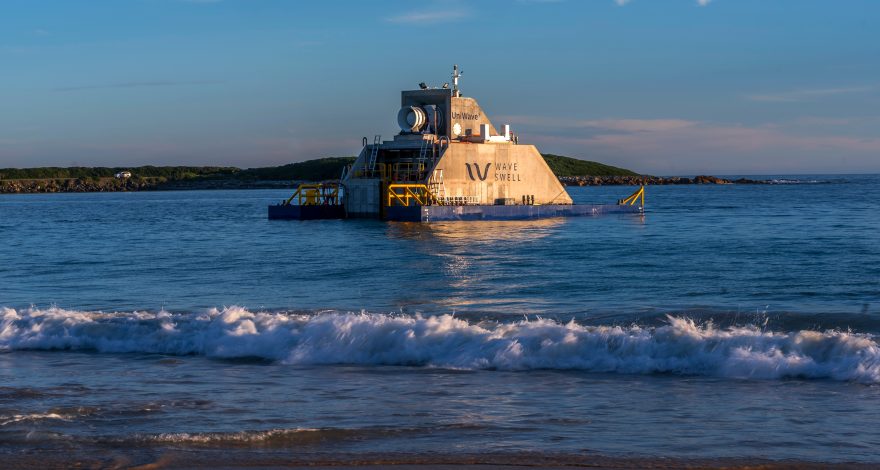
We can engineer a renewable and reliable energy future, if we invest in the skills to get us there.
We were over the moon recently to see and read the news that the Wave Swell Energy (WSE) project on Tasmania’s King Island has been, pardon the pun, making waves. Bobbing just off the shore near the town of Grassy, the 200kW wave-powered turbine generator has completed a world-first – generating renewable energy from waves and dispatching to the electricity grid to power homes.
Known as UniWave200, it generates energy from waves based on a technology called oscillating water columns. The technology is based on the concept of a blowhole, where the generator captures waves in the chamber, forcing air upwards, which then spins a turbine to produce clean, renewable energy.
We’ve been part of the journey for some years, working with WSE since they enlisted our help to solve the challenge of a unidirectional turbine. We have been engaged with WSE from the fabrication of the unit, on-site assembly, and commissioning.
The unit has been successfully generating energy and supplying the grid for the past year. Not just generating and proving the concept – a fully functional generator connected to the grid and supplying homes with renewable energy. A world first for this type of technology.
The company cites a conversion rate of 48% – which means that from each wave, almost half its energy is captured and exported to the grid. “That rate is very encouraging … and is higher than other renewable energy technologies,” Wave Swell Energy CEO Paul Geason told the ABC.
Wave or ocean energy is being explored. The CSIRO launched a 4D interactive wave atlas that helps answer the question of where wave energy could be harvested. The map looks at ocean dynamics to help pick the best locations relative to available infrastructure and spatial constraints, such as ports and shipping routes, fisheries and aquaculture, and marine and coastal parks.
A CSIRO analysis shows that wave energy could contribute up to 11% of Australia’s energy (enough to power a city the size of Melbourne) by 2050, making it a strong contender in Australia’s renewable energy mix.
So, why not more examples of this technology and approach to Australia’s energy mix? We would say cost and complexity. The answer to both dilemmas is clever engineering. Cost and complexity are related. The complexity of the technology contributes to the cost of generation, while the cost of generation is the headline figure or price tag that can mean a project is dead in the water.
Scale is an important component of reducing cost. Analysis of the Wave Swell operation revealed the technology would reach an LCOE (levelised cost of energy) of AUD$0.05 per kWh at a scale of 2,500 MW of installed capacity. This puts it on par with wind and solar PV, currently the lowest-cost forms of generation, and it could do this with just 0.35% of the installed capacity of what was required by onshore wind and solar PV.
So, it’s efficient, takes up less room, and you can add that wave power is far less variable and more predictable than wind power. Again, why not more projects? Consider complexity. Any wave or tidal energy unit sits in harsh salt-water environments, with abrasion and corrosion bedevilling anything mechanical. Then the structure has to be strong enough to harvest wave energy without being buffeted to pieces by the very same.
Again, it comes back to engineering. The unique concept design of the UniWave200 came about only through rigorous research, development, and testing. Investment is undoubtedly critical, but without the diverse expertise and skills in relevant engineering disciplines and the fabrication know-how, these projects won’t happen.
Engineers are problem solvers by nature. Delivering clever engineering can be the catalyst for developing game-changing technology like WSE. Provided we invest in engineering skills as much as the technology itself.


